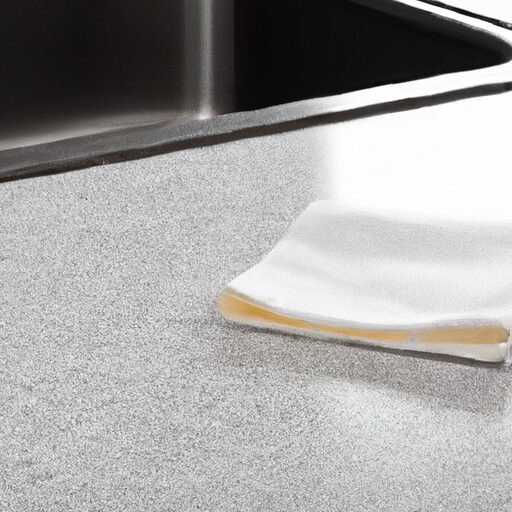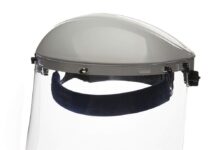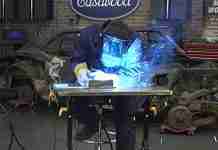In this article, we explore a practical solution to the age-old problem of spatter protection. We all know how frustrating it can be when our newly finished top becomes a target for unsightly splatters. But fear not, for we have a solution that will leave your top looking pristine and spatter-free. Find out the secret to protecting your top in this quick and informative read.
1. Choosing the Right Finishing Method
When it comes to protecting surfaces from spatter, there are several finishing methods you can choose from. Each method has its own advantages and considerations, so it’s important to understand the options before making a decision.
1.1 Applying a Protective Coating
One of the most common methods for protecting surfaces from spatter is applying a protective coating. This can be done using various types of paints or coatings that are designed to provide a barrier between the surface and spatter. These coatings are typically applied in liquid form and then dry to form a protective layer.
1.2 Using a Heat-Resistant Paint
If you’re working with surfaces exposed to high temperatures, such as near a heat source or in a kitchen, using a heat-resistant paint may be the right choice. Heat-resistant paints are specially formulated to withstand high temperatures without melting or burning. They provide an additional layer of protection against spatter and also help to prevent discoloration or damage to the surface.
1.3 Applying Ceramic Coating
Ceramic coatings are becoming increasingly popular for protecting surfaces from various types of damage, including spatter. These coatings are made from a blend of ceramic nanoparticles and other compounds that create a strong and durable protective layer. Ceramic coatings are highly resistant to heat, chemicals, and abrasion, making them an excellent choice for surfaces that are exposed to spatter on a regular basis.
1.4 Powder Coating for Durability
If durability is a top priority for protecting surfaces from spatter, powder coating may be the right choice. Powder coating involves applying a dry powder to a surface and then heating it to create a smooth and durable finish. This method provides excellent protection against spatter, as well as resistance to chipping, scratching, and fading. Powder coating is commonly used for metal surfaces, but can also be applied to other materials.
2. Preparing the Surface
Before applying any type of protective finish to a surface, proper preparation is essential. This ensures that the finish adheres properly and provides optimal protection against spatter. Here are some important steps to follow when preparing the surface:
2.1 Cleaning the Area
Start by thoroughly cleaning the surface to remove any dirt, dust, or debris that could interfere with the adhesion of the protective finish. Use a mild detergent or cleaner and a soft cloth or sponge to gently scrub the surface. Rinse with clean water and allow it to dry completely before proceeding to the next step.
2.2 Sanding or Smoothing the Surface
If the surface has any rough spots or imperfections, sanding or smoothing them can help ensure a smooth and even application of the protective finish. Use sandpaper with an appropriate grit for the material and surface you are working with. Sand in a circular or back-and-forth motion until the surface is smooth and any rough edges are eliminated.
2.3 Removing Rust or Oxidation
If the surface has any rust or oxidation, it’s important to remove it before applying the protective finish. Use a rust remover or wire brush to scrub away the rust, then rinse the area thoroughly to remove any residue. If necessary, you can also apply a rust converter to prevent further rust formation before proceeding with the protective finish.
3. Applying a Protective Coating
Once the surface is properly prepared, it’s time to apply the protective coating. Here are the steps to follow for a successful application:
3.1 Selecting the Right Coating
Consider the type of surface you are working with, as well as the level of protection required. Different coatings have different properties and may be better suited for specific surfaces or environments. Research and choose a coating that is compatible with the material and provides the desired level of protection against spatter.
3.2 Applying a Primer
Before applying the protective coating, it’s often recommended to apply a primer to the surface. A primer helps to improve the adhesion of the protective coating and ensure a longer-lasting finish. Follow the manufacturer’s instructions for the primer, including the recommended drying time before proceeding to the next step.
3.3 Applying Multiple Coats
For optimal protection against spatter, it’s usually recommended to apply multiple coats of the protective coating. This helps to build up a thicker barrier that is more resistant to damage. Allow each coat to dry completely according to the manufacturer’s instructions before applying the next coat.
3.4 Drying and Curing
Once all the desired coats have been applied, allow the protective coating to dry and cure fully. This may involve a waiting period of several hours or even days, depending on the specific coating and environmental conditions. Avoid exposing the freshly coated surface to moisture or other potential sources of damage during this curing process.
4. Using a Heat-Resistant Paint
When it comes to surfaces that are exposed to high temperatures, such as near a heat source or in a kitchen, using a heat-resistant paint can help protect against spatter. Here’s how to use heat-resistant paint effectively:
4.1 Choosing a Heat-Resistant Paint
Select a heat-resistant paint that is specifically designed for the temperature range you expect the surface to be exposed to. Different paints have different temperature tolerances, so it’s important to choose one that can handle the heat level in your particular situation. Be sure to read the manufacturer’s instructions for proper application and curing.
4.2 Applying with a Brush or Roller
Before applying the heat-resistant paint, use a brush or roller to coat the surface evenly. Start at one end and work your way across, applying an even layer of paint. Take care to avoid drips or clumps that could affect the appearance and effectiveness of the paint. Follow the manufacturer’s recommended drying time between coats, if multiple coats are required.
4.3 Spray Painting for even Coverage
If you prefer a more even and uniform finish, you can also use a spray paint method to apply the heat-resistant paint. Ensure proper ventilation and follow the manufacturer’s instructions for spraying techniques. Apply thin, even coats, allowing each coat to dry before applying the next one. This method can provide a smooth and seamless finish with less effort.
5. Applying Ceramic Coating
Ceramic coatings are a great option for surfaces exposed to spatter, as they offer exceptional durability and protection. Here’s how to apply ceramic coating effectively:
5.1 Understanding Ceramic Coating
Before applying ceramic coating, it’s important to understand its unique properties. Ceramic coatings contain nanoparticles that create a strong bond with the surface, providing a hard and durable protective layer. This layer is resistant to heat, chemicals, UV rays, and abrasion, making it an ideal choice for protecting surfaces from spatter.
5.2 Applying Ceramic Coating
Follow the manufacturer’s instructions for applying ceramic coating. Typically, the coating is applied using an applicator pad or cloth in a circular motion. Ensure even coverage and try to avoid applying too thick of a layer, as this can lead to drips or an uneven finish. Allow the coating to dry for the recommended time before proceeding to the next step.
5.3 Curing and Protecting the Coating
Once the ceramic coating has dried, it’s important to allow it to cure fully. This can take anywhere from a few hours to a few days, depending on the specific product and environmental conditions. Avoid exposing the coated surface to moisture or extreme temperatures during the curing process. Once cured, the ceramic coating will provide a long-lasting and durable barrier against spatter.
6. Powder Coating for Durability
If durability is a top priority for protecting surfaces from spatter, powder coating may be the ideal choice. Here’s how to apply powder coating effectively:
6.1 Understanding Powder Coating
Powder coating involves applying a dry powder to a surface and then heating it to create a protective and durable finish. The powder is typically electrostatically applied, ensuring even coverage. Once heated, the powder fuses together, forming a smooth and seamless surface that is resistant to spatter, chipping, scratching, and fading.
6.2 Preparing the Surface
Before applying powder coating, prepare the surface by cleaning it thoroughly and ensuring it is dry. Remove any loose debris or contaminants that could interfere with the adhesion of the powder coating. Ensure that the surface is smooth and free of any rust or oxidation. Use masking tape or other protective measures to cover any areas that should not be coated.
6.3 Applying Powder Coating
Apply the powder coating using a specialized powder coating gun or system. Follow the manufacturer’s instructions for the specific product and equipment being used. Coat the surface evenly, ensuring complete coverage. Once applied, gently tap or shake the surface to remove any excess powder.
6.4 Curing the Coating
Once the powder coating has been applied, it needs to be cured. This usually involves placing the coated surface in an oven or using a heat gun to heat it to the recommended temperature. The heat causes the powder to melt and fuse together, creating a durable and protective finish. Allow the coating to cool completely before exposing it to spatter.
7. Cleaning the Area
In addition to applying a protective finish, it’s important to keep the area clean to prevent the buildup of spatter and maintain the effectiveness of the protective coating. Here are some key steps for cleaning the area:
7.1 Removing Loose Debris
Regularly remove any loose debris or spatter from the surface using a soft brush or cloth. This prevents the debris from accumulating and potentially causing damage to the protective finish. Be gentle when cleaning to avoid scratching or damaging the surface.
7.2 Using Cleaning Solutions
For tougher stains or buildup, you may need to use a cleaning solution. Choose a mild detergent or cleaning product that is suitable for the specific surface material. Follow the instructions on the product and use a soft cloth or sponge to gently scrub the area. Rinse with clean water and dry thoroughly to prevent water spots or damage.
7.3 Scrubbing or Power Washing
For larger or more stubborn areas of spatter, you may need to use more aggressive cleaning methods. Scrubbing with a brush or using a power washer can help to remove stubborn spatter. However, be cautious when using power washing, as excessive pressure or using the wrong nozzle can cause damage to the protective finish or underlying surface.
8. Sanding or Smoothing the Surface
In some cases, the surface may develop imperfections or rough spots over time. To maintain the effectiveness of the protective finish and ensure optimal protection against spatter, it may be necessary to sand or smooth the surface. Here are some key steps for sanding or smoothing the surface:
8.1 Choosing the Right Sandpaper Grit
Determine the appropriate sandpaper grit for the specific surface material and the level of imperfections. Coarser grits are typically used for removing larger imperfections, while finer grits are used for smoothing and achieving a polished finish. Start with a coarser grit and gradually work your way up to finer grits as needed.
8.2 Sanding Techniques
When sanding the surface, use a circular or back-and-forth motion with light to moderate pressure. The goal is to smooth the surface and remove any imperfections without causing damage or excessive removal of the protective finish. As you sand, periodically check the surface with your fingertips to ensure it is smooth to the touch.
8.3 Sanding by Hand or Using Power Tools
Depending on the size and nature of the surface, you can choose to sand by hand or use power tools for more efficient and accurate results. Hand sanding is typically suitable for smaller areas or delicate surfaces, while power tools such as sanders or buffers can be used for larger surfaces or when a more aggressive approach is required. Always follow the manufacturer’s instructions for the specific tool being used.
9. Removing Rust or Oxidation
Over time, surfaces exposed to spatter may develop rust or oxidation, which can compromise the protective finish and overall effectiveness against spatter. It’s important to address these issues promptly. Here are some steps to remove rust or oxidation effectively:
9.1 Evaluating the Extent of Rust
Start by evaluating the extent of the rust or oxidation on the surface. Determine whether it can be easily removed with a rust remover or wire brush, or if more intensive measures such as sanding or rust conversion are necessary. The severity of the rust will determine the most appropriate approach.
9.2 Using Rust Removers or Wire Brushes
If the rust or oxidation is minor, using a rust remover or wire brush may be sufficient to remove it. Apply the rust remover according to the manufacturer’s instructions and use a wire brush to scrub away the rust. Rinse the area thoroughly and dry it before evaluating if further treatment is necessary.
9.3 Applying Rust Converters
For more severe rust or oxidation, applying a rust converter can help prevent further rust formation and restore the surface. Rust converters contain chemicals that react with the rust, forming a protective layer that inhibits further oxidation. Follow the manufacturer’s instructions for applying the rust converter and allow it to dry and cure fully before applying any protective finish.
10. Selecting the Right Coating
When choosing a protective coating to guard against spatter, it’s important to consider the different types of coatings available and the specific environment and conditions in which the surface will be exposed. Here are some key factors to consider:
10.1 Understanding Different Types of Coatings
Research and understand the different types of coatings available in the market. Consider their specific properties, such as heat resistance, durability, and chemical resistance. Some coatings may be better suited for certain materials, while others may excel in high-temperature environments. Determine which coating type aligns with your specific requirements for protection against spatter.
10.2 Considering the Environment and Conditions
Take into account the environment and conditions in which the surface will be exposed. Factors such as temperature, humidity, exposure to chemicals or UV rays, and frequency of spatter can all influence the effectiveness and longevity of the chosen coating. Consider whether the surface will be indoors or outdoors, and evaluate any potential challenges or hazards that could affect the performance of the coating.
By following these steps and considering the various options available, you can effectively finish the top to protect it from spatter. Whether you choose a protective coating, heat-resistant paint, ceramic coating, or powder coating, proper surface preparation and maintenance are key to maintaining a durable and effective barrier against spatter. Choose the method that best suits your needs and enjoy a protected surface for years to come.





































